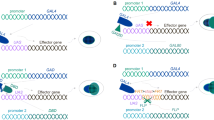Abstract
One of the most important questions in the genetics of behavior is that of studies of the mechanisms of learning and memory. A convenient system for this is provided by Drosophila melanogaster, in which a whole series of mutations affecting the formation of different types of memory and learning have been obtained. The brain formations involved in these processes have been studied in parallel. Attention is currently focused on two main structures: the central complex and the mushroom bodies. These mediate the integration and storage of information accumulating during the process of learning. Mutants with defects in individual parts of the central complex and mushroom bodies have been obtained. Mutants simultaneously affecting the operation, development, or structure of the central part of the cerebral neural ganglion and the ability to learn and form memory traces are of particular interest. We have evaluated the learning ability of mutants with defects in the central complex (cex KS181 and ccb KS127) and mutants with defects in the mushroom bodies (mud 1, mbm 1, and cxb N71), using a method based on the conditioned reflex suppression of courtship. Memory defects were seen in cex KS181 and mud 1 mutants.
Similar content being viewed by others
REFERENCES
N. G. Kamyshev, K. G. Iliadi, Yu. V. Bragina, E. V. Savvateeva-Popova, E. V. Tokmacheva, and R. Preat, “Identification of mutant Drosophila with memory defects after acquisition of conditionedreflex courtship suppression,” Ros. Fiziol. Zh. im. I. M. Sechenova, 85, No. 1, 84–92 (1999).
I. Boquet, R. Hitier, M. Dumas, M. Chaminade, and T. Preat, “Central brain postembryonic development in Drosophila. Implication of genes expressed at the interhemispheric junction,” J. Neurobiol., 42, No. 1, 33–548 (2000).
S. Boynton and T. Tully, “Lathero, a new gene involved in associative learning and memory in Drosophila melanogaster, identified from P-element mutagenesis,” Genetics, 131, 655–672 (1992).
H. Braak, E. Brook, D. Yilmazer, R. A. de Vos, E. N. Jansen, and J. Boh, “Pattern of brain destruction in Parkinson's and Alzheimer's diseases,” J. Neural Transm., 103, 455–490 (1996).
R. L. Davis, “Physiology and biochemistry of Drosophila learning mutants,” Physiol. Rev., 72, No. 2, 299–317 (1996).
J. S. De Bell and M. Heisenberg, “Associative odor learning in Drosophila abolished by chemical ablation of mushroom bodies,” Science, 263, No. 5143, 692–695 (1994).
J. DeZazzo and T. Tully, “Dissection of memory formation: from behavioral pharmacology to molecular genetics,” Trends Neurosci., 18, 212–218 (1995).
J.-M. Dura, T. Preat, and T. Tully, “Identification of linotte, a new gene affecting learning and memory in Drosophila melanogaster,” J. Neurogenetics, 9, No. 1, 1–14 (1993).
P. L. Han. L. R. Levin, R. R. Reed, and R. L. Davis, “Preferential expression of the Drosophila rutabaga gene in mushroom bodies, neural centers for learning in insects,” Neuron, 9, 619–627 (1992).
M. Heisenberg, A. Borst, S. Wagner, and D. Byers, “Drosophila mushroom body mutants are deficient in olfactory learning,” J. Neurogenet. 2, No. 1, 1–30 (1985).
M. Heisenberg, “Central brain function in insects. Genetic studies on the mushroom bodies and central complex in Drosophila,” Fortschritte der Zoologie, 39, Neural Basis of Behavioral Adaptations, Gustav Fischer, Stuttgart, Jena, New York (1988).
M. A. Joiner and L. C. Griffith, “Mapping of the anatomical circuit of CaM kinase-dependent courtship conditioning in Drosophila,” Learning and Memory, 6, 177–192 (1999).
N. G. Kamyshev, K. G. Iliadi, and J. V. Bragina, “Drosophila conditioned courtship. Two ways of testing memory,” Learning and Memory, 6, No. 1, 1–20 (1999).
A. Nighorn, M. I. Healy, and R. L. Davis, “The cyclic AMP phosphodiesterase encoded the Drosophila dunce gene is concentrated in the mushroom body neuropil,” Neuron, 6, No. 3, 455–467 (1991).
R. Strauss and M. Heisenberg, “A higher control center of locomotor behavior in the Drosophila brain,” J. Neurosci., 13, No. 5, 1852–1861 (1993).
Author information
Authors and Affiliations
Rights and permissions
About this article
Cite this article
Sitnik, N.A., Tokmacheva, E.V. & Savvateeva-Popova, E.V. The Ability of Drosophila Mutants with Defects in the Central Complex and Mushroom Bodies to Learn and Form Memories. Neurosci Behav Physiol 33, 67–71 (2003). https://doi.org/10.1023/A:1021131415653
Issue Date:
DOI: https://doi.org/10.1023/A:1021131415653




